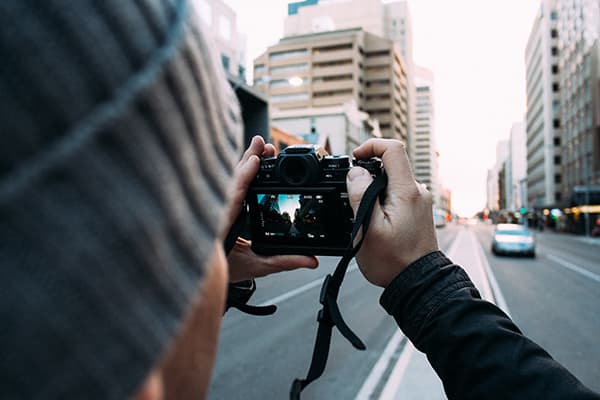Traditionally, the reciprocal of the effective focal length is a good guide to a safe handheld shutter speed. With a 100mm lens on a full-frame camera, that means using a shutter speed that’s at least 1/100 or 1/125sec to ensure that images are sharp. Meanwhile with a 200mm lens you should use at least 1/200sec and with a 35mm lens 1/35sec (or 1/40mm as there usually isn’t a 1/35sec option).
If your camera has a smaller than full-frame sensor you need to use the effective focal length as a guide because the movements seem more pronounced. Thus a 100mm lens on an APS-C format camera requires a shutter speed that is at least 1/150sec. As focal lengths get shorter the reciprocal rule starts to break down as many people can’t make sharp shots when handholding their camera with shutter speeds below 1/30sec.

Manufacturers usually state the level of extension in exposure time that their stabilisation system allows when you’re handholding a camera. Over the years this has crept up from 2EV (the difference between 1/100sec and 1/25 sec), to 3EV (1/100sec and 1/13sec), 4EV (1/100sec and 1/6sec), 5EV (1/100sec and 1/3sec) and even 6.5EV (1/100sec and just under a second) with the Olympus OM-D E-M1 Mark II.
These claims are based on test-bench measurements and it’s important to find what works for you. The easiest way to do this is to shoot a subject at whatever shutter speed you think is the longest and still get sharp images. Shoot it ten times and then look at the images on your computer, examining them at 100%. If they are all sharp, great, reduce the shutter speed further and repeat the process. The aim is to find the point at which roughly five out of ten of your images are completely sharp at 100% on screen. Once you’ve found that value, you know that if you use that shutter speed with that specific lens and focal length, you need to shoot at least two shots to ensure you have a sharp result. If you like a safer bet, use a shutter speed that gives you a higher hit rate.







